¶ Introduction
Turns in attitude instrument flying are accomplished by reference to the instruments and require an effective cross-check and calculation. They can be made with different angles and rates but most of the instrument procedures require a standard rate of turn.
¶ Instruments
For turns:
- Altimeter is primary instrument for pitch
- Airspeed indicator is primary instrument for power
- Attitude indicator is primary instrument for bank initially and supporting instrument for pitch
- Vertical speed indicator is supporting instrument for pitch
- Turn-and-slip indicator is primary instrument for bank when turn is established
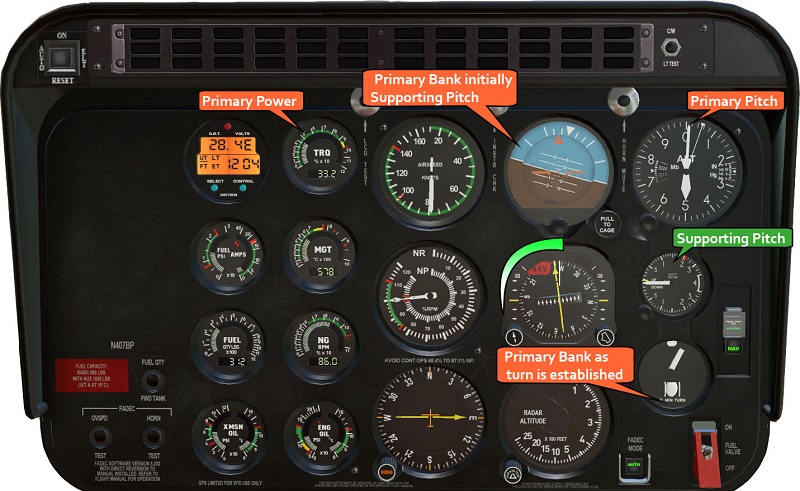
¶ Standard Rate Turn
True airspeed determines the angle of bank necessary to maintain a standard rate turn.
A rule of thumb to determine the approximate bank angle required for a standard rate turn is to use 15 percent of the airspeed. A simple way to determine this amount is to divide the airspeed by 10 and add one-half to the result.
For example, the required bank for a standard rate of turn for a helicopter flying at 60 knots is:
.gif)
¶ Application
- To enter a turn, apply lateral cyclic in the direction of the desired turn. The entry should be accomplished smoothly, using the attitude indicator to establish the approximate bank angle
- When the turn indicator indicates a standard rate turn, it becomes primary for bank. The attitude indicator now becomes a supporting instrument
- If an increase in power is required to maintain airspeed, slight forward cyclic pressure may be required since the helicopter tends to pitch up as collective pitch is increased. Apply pedal trim, as required, to keep the ball centered
- To recover to straight-and-level flight, apply cyclic in the direction opposite the turn. The rate of roll-out should be the same as the rate used when rolling into the turn
- When the helicopter is approximately level, the heading indicator becomes primary for bank as in straight-and-level flight
Cross-check the airspeed indicator and ball closely to maintain the desired airspeed and pedal trim.
¶ Turn to a Predetermined Heading
Turning to a predetermined heading is starting and ending your turn at a specific heading.
Using cardinal headings (N, W, E, S) to start and finish the turn is a good practice for beginners.
A helicopter turns as long as its lateral axis is tilted; therefore, the recovery must start before the desired heading is reached.
As a guide, when making a 3° per second rate of turn, use a lead of one-half the bank angle. For example, if using a 12° bank angle, use half of that, or 6°, as the lead point prior to the desired heading.
The bank angle should never exceed the number of degrees to be turned.
¶ Timed Turns
A timed turn is a turn during which the clock and turn-and-slip indicator are used to change heading a definite number of degrees in a given time.
Every standard rate of turn is a timed turn as explained above. A timed turn can also be used if the heading indicator becomes inoperative.
Calculating the bank required to achieve the expected change in heading in a given time is very important. When the calculated bank is established, start the timer and check your accuracy at the mid point of the turn. If you are ahead decrease the bank, if you are behind increase the bank.
¶ Change of Airspeed and Altitude in Turns
Changing airspeed or altitude individually or jointly in turns is an effective manoeuvre for increasing proficiency in all three basic instrument skills.
Since the manoeuvre involves simultaneous changes in all components of control, proper execution requires a rapid cross-check and interpretation, as well as smooth control.
Proficiency in the manoeuvre also contributes to confidence in the instruments during attitude and power changes involved in more complex manoeuvres.\
¶ Practical Example
¶ Conditions and objective
Helicopter is in straight-and-level flight at 2000' and heading North.
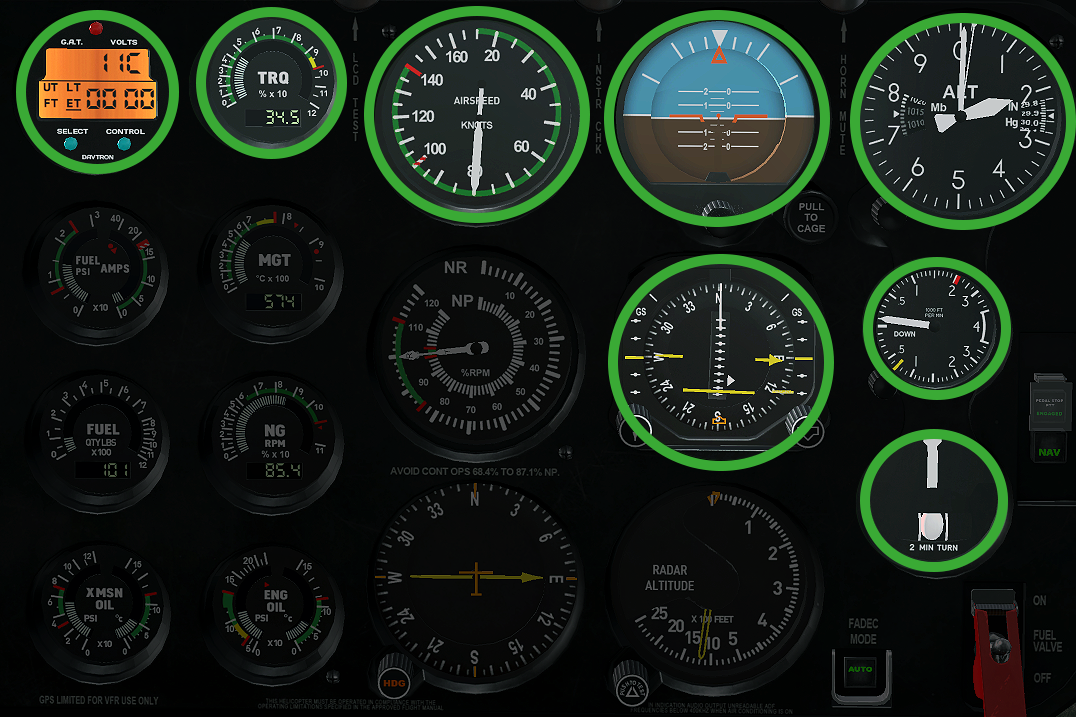
Objective: Turn right 180 degrees to the South at standard rate
¶ Entry
Before starting your turn:
- Calculate required bank
80/10=8 8/2=4 8+4=12
- Reset timer
Apply enough right cyclic to establish 12 degees bank and start the timer.
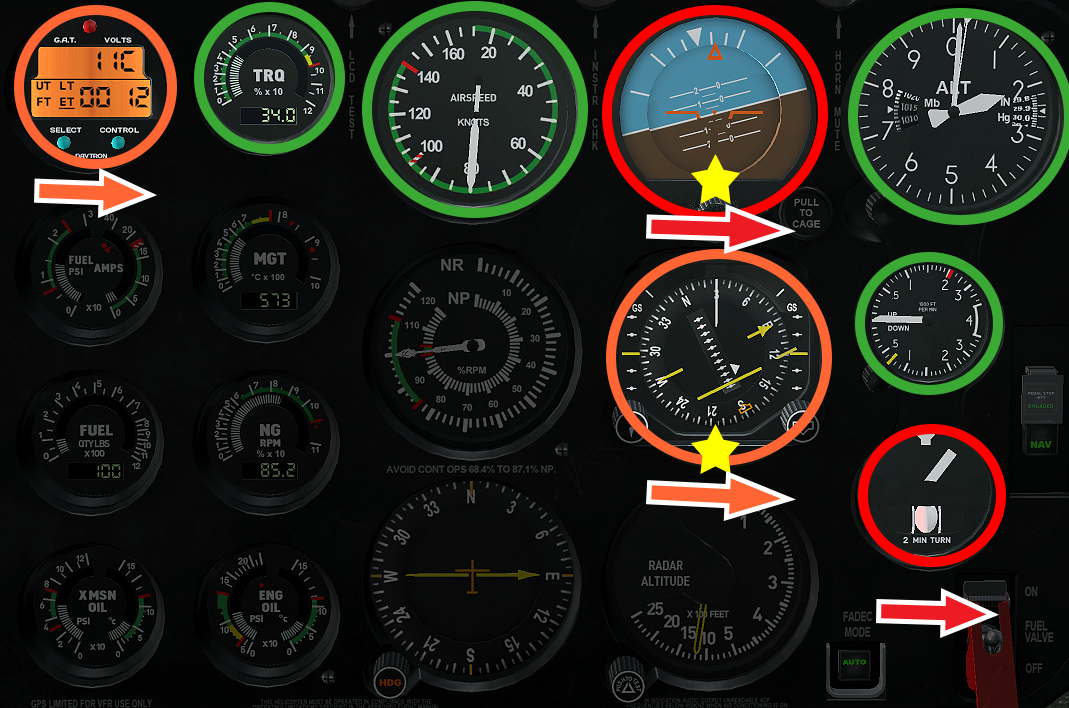
When 12 degrees bank has been established, use the turn indicator to maintain the standard rate turn and cross-check other pitch and bank instruments for any deviations.
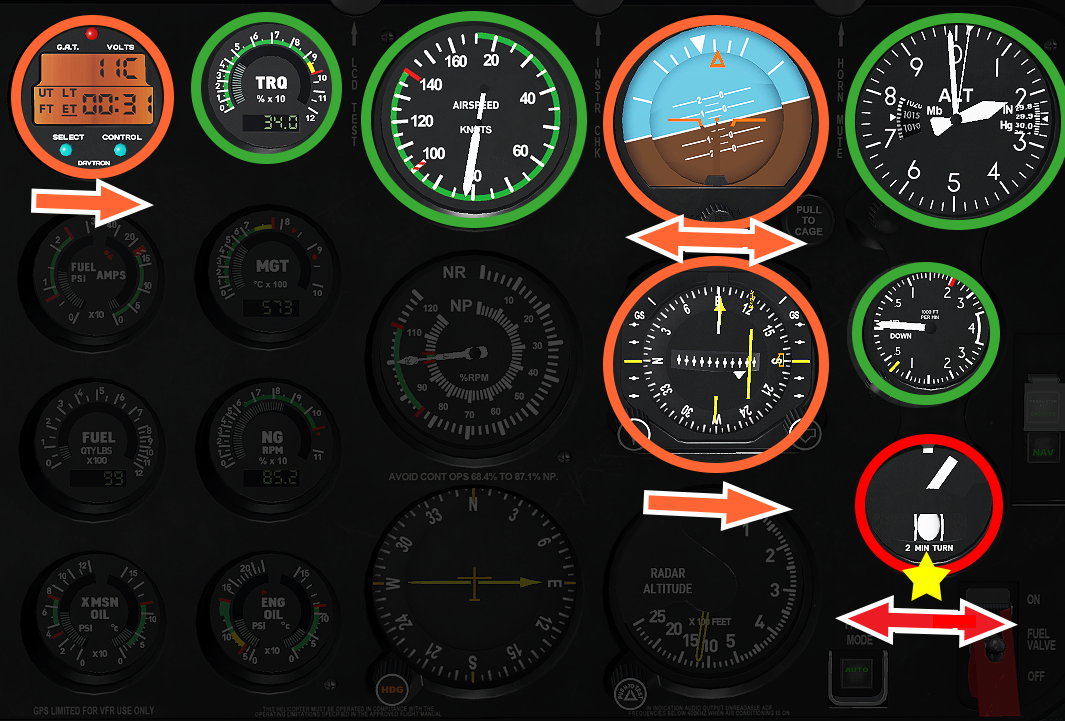
Half way your turn, cross-check timer and heading.
- Timer 31 seconds
- Heading East
No correction is required.
¶ Recovery
Apply left cyclic to recover to straight-and-level flight.
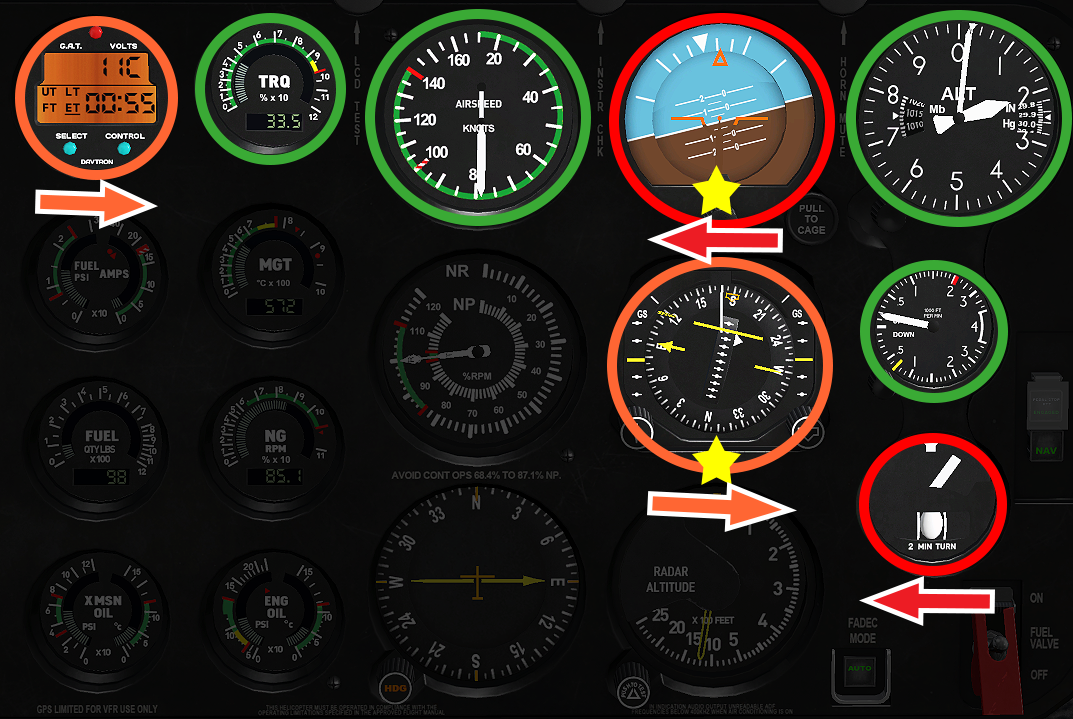
Establish straight-and-level flight.
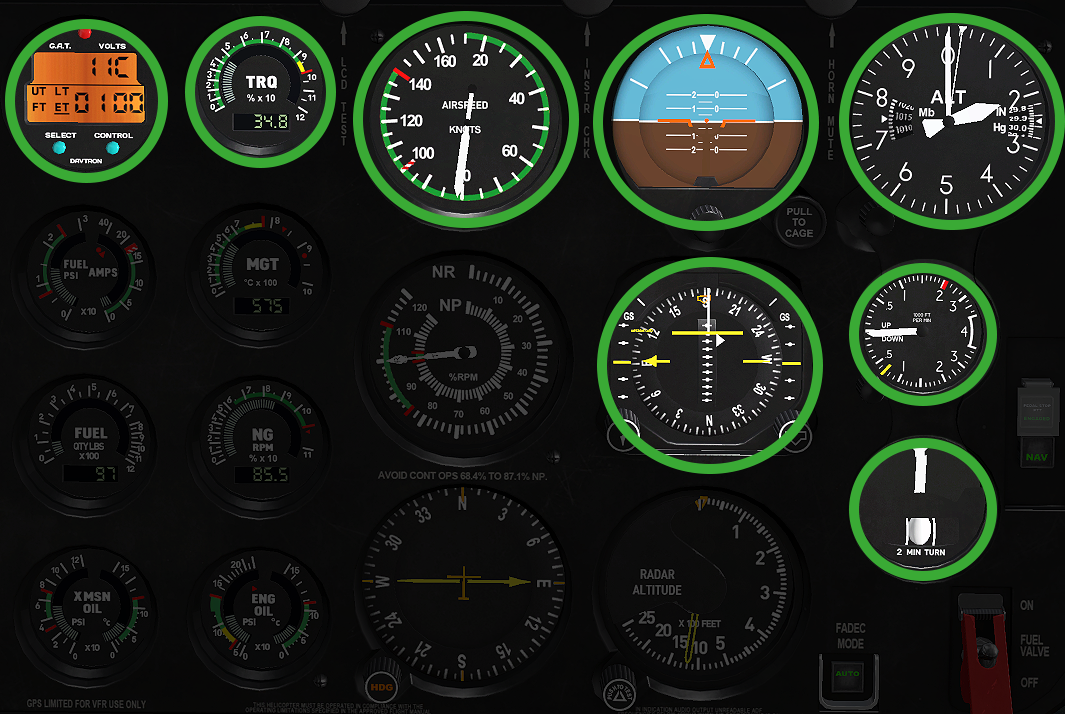
- Instrument Flying Handbook (FAA-H-8083-15B)
- VID 522050- Creation
- VID 496402 - Wiki.js integration